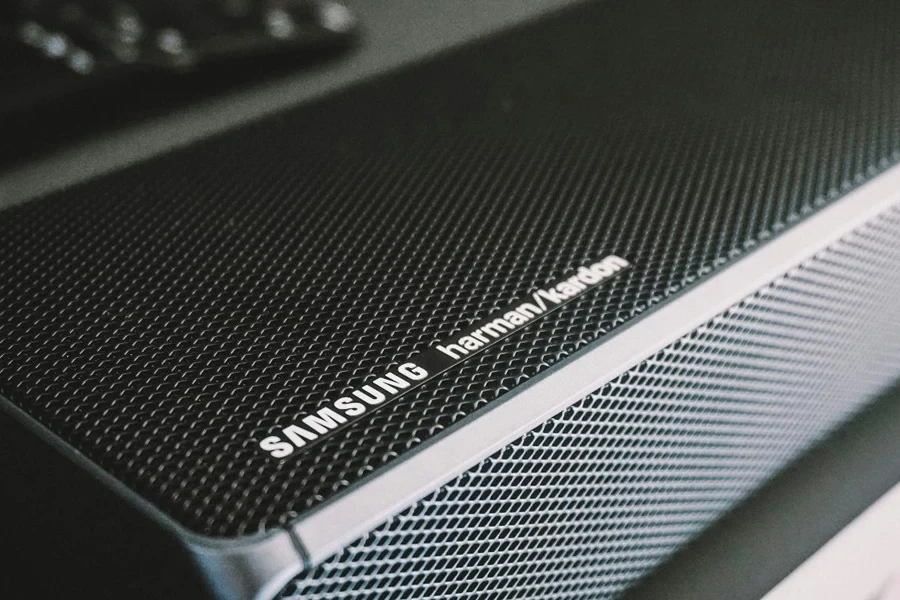Soundbars play an important role in today’s home entertainment setups by providing an efficient way to improve sound quality significantly. The industry is experiencing growth due to technological advancements and shifts in consumer preferences towards home cinema experiences. Professional buyers in the industry need to stay updated with these developments to make ideal purchasing choices. This article offers information about market trends and innovations impacting the soundbar sector’s future landscape. It’s crucial to grasp these aspects when choosing the ideal products to satisfy changing consumer needs.
Table of Contents
● Market overview: a booming soundscape
● Key technology and design innovations: redefining audio excellence
● Top-selling models driving market trends: leaders of the audio revolution
● Conclusion
Market overview: a booming soundscape

Market scale and growth trajectory
The worldwide soundbar industry reached a worth of $6.9 billion in 2023. It is forecasted to experience expansion with an estimated compound annual growth rate (CAGR) of 8.7% until 2032, as per Global Market Insights. Several factors are driving this growth, including the increasing demand for streaming services such as Netflix and Amazon Prime Video. This trend has prompted consumers to look for top-notch experiences to enhance their viewing pleasure. Furthermore, upgrades in television technology like 4k and 8k resolutions have increased the importance of high-quality sound systems since the built-in speakers on these televisions usually do not provide as good experiences as desired. Shifts in consumer habits have fueled the popularity of soundbars as individuals are now dedicating resources to enhancing their home entertainment environments.
Regional dominance and market shares
In 2023, North America mostly controlled the soundbar market, notably the U.S., which accounted for USD 1.7 billion of the market value. The region’s high consumer population supports this market dominance, streaming services, and a preference for top-notch home entertainment systems. Europe and Asia Pacific are also experiencing expansion in this sector, with China taking the lead in Asia Pacific by holding a market share of 22.3%. In these market areas, growth is influenced by factors like rising disposable income, urbanization trends, and the growing popularity of smart home technologies.
Market challenges and competitive landscape
The market for soundbars is extremely competitive as names such as Bose, Samsung, Sony, and LG compete for a share of the market. This fierce competition often leads to price pressures where companies must reduce prices to stay competitive, which puts pressure on profit margins. Another challenge is market saturation in areas where many products are available, making it harder for new companies to grow and constantly forcing existing players to innovate. Despite these obstacles, the market is expected to continue expanding due to technological progress and consumers’ increasing desire for improved audio experiences.
Key technology and design innovations: redefining audio excellence

Advanced audio technologies driving sound quality
Soundbars nowadays come with Dolby Atmos and DTS technologies that deliver three-dimensional audio using object-based sound processing techniques. Dolby Atmos soundbars often come with upfiring drivers that bounce sound off the ceiling to create vertical audio effects for a more immersive experience in terms of height. For example, a 5.1.2 channel soundbar setup includes five speakers, one subwoofer, and two upfiring speakers to generate a 360-degree sound environment. DTS technology, in a movie or game scene setting, for instance, allows users to precisely adjust sound elements like voices or ambient sounds for better clarity and depth in the sound experience. Moreover, advanced soundbars with AI-powered optimization features can adapt to the room’s acoustics and fine-tune the output in real-time, enhancing the viewing or gaming experience with well-balanced and immersive sound quality across different types of media content, like films, games, or music.
Smart features and seamless connectivity

Soundbars are getting smarter, adding smart features that improve connectivity and user engagement. You’ll find that many of today’s soundbars come equipped with far-field microphones to work seamlessly with voice assistants like Amazon Alexa and Google Assistant. You can control your soundbar and other smart home gadgets with just your voice. These setups often come with the ability to play music across rooms by connecting speakers via Wi-Fi for a synchronized listening experience. Bluetooth 5.0 is a version found in these gadgets that provides improved range and stability while reducing delays when streaming music directly from phones or tablets. A few soundbars even allow for high-quality audio streaming through Wi-Fi to let users enjoy music formats like FLAC or ALAC without losing any details. Furthermore, HDMI eARC (Enhanced Audio Return Channel) is often included to support formats like Dolby TrueHD and DTS HD Master Audio for a top-notch audio experience.
Design innovations for modern living
The newest soundbar models emphasize style and performance by saving space and having sleek designs. They are often 2.5 inches tall and can be easily placed beneath wall-mounted TVs without blocking the screen. Materials such as brushed aluminum and acoustic fabric are used to achieve a high-end appearance and improve distribution. Furthermore, some soundbars come with ergonomic designs that allow detachable speakers to be positioned throughout a room for an expansive sound field when desired. These sound systems frequently include EQ options and room calibration functions that utilize built-in microphones to assess room acoustics and adapt the output accordingly. This guarantees that individuals can enjoy good sound quality personalized to their particular room arrangement. They range from deep bass in a large living area to crystal-clear dialogue in a compact media space.
Top-selling models driving market trends: leaders of the audio revolution

Budget-friendly options delivering premium sound
In the budget-friendly options for home entertainment systems, soundbars such as the Sony HT S2000 excel in providing quality audio capabilities, which is usually seen in more expensive models. The HT S2000 is a soundbar with a 3.1 channel setup that features Dolby Atmos for an immersive sound experience without the hefty price tag. This model comes equipped with Sony’s S FORCE PRO Front Surround technology, which produces a wide soundstage environment without additional rear speakers. The sound system boasts a 250-watt audio power output, which delivers clear dialogue and deep bass tones. It is a great option for budget-savvy shoppers looking for top-notch audio performance without breaking the bank.
Another standout choice is the Hisense AX5125H soundbar with a 5.1.2 channel setup that includes Dolby Atmos support. The package comes equipped with a subwoofer and rear speakers to offer users a surround sound experience at an affordable price compared to higher-end models.
High-end soundbars offering immersive experiences
The Samsung HW Q990D stands out as a top choice and boasts a setup of 11.1.4 channels system and 22 speakers, ensuring immersive audio delivery to all corners of your space. Moreover, its inclusion of upfiring drivers and wireless rear speakers contributes to an enveloping listening experience that truly fills the room with captivating audio vibes. Its Q-symphony feature enhances the output by syncing seamlessly with compatible Samsung TVs to create a cohesive soundstage that elevates your overall entertainment experience. The HW Q990D is designed for gamers looking for top-notch audio and video quality with its 4K 120Hz passthrough support via HDMI 2.1. It’s a 9.1.5 channel system that provides immersive spatial audio and AI room calibration along with WOWCAST wireless audio transmission tailored for LG TV users.
Versatile models catering to diverse needs
In the mid-range market segment sit two standout soundbars: the Bose Smart Soundbar 600 and the Sonos Beam (Gen 2). These options balance style and quality with their designs and impressive audio capabilities. The Bose Smart Soundbar 600 boasts a 3.0.2 channel setup with Dolby Atmos support and TrueSpace technology for a captivating listening experience in a compact package. It comes packed with Bluetooth, Wi-Fi, and AirPlay 2 connections, making it ideal for streaming music and managing home gadgets. The Sonos Beam (2nd Generation) is also a loved choice that supports Dolby Atmos and comes equipped with HDMI eARC connectivity to deliver notch audio quality transmission effortlessly. Its compact design is perfect for smaller spaces, and its Trueplay tuning technology adjusts the sound automatically depending on the room’s acoustics.
Another versatile option is the JBL Bar 1300X, which features an 11.1.14 channel configuration and wireless surround speakers. It caters to various entertainment needs from movies to gaming while providing flexibility and power all wrapped into one package.
Conclusion

The soundbar market is experiencing growth due to the advancements in technology and the introduction of high-performing soundbar models that are becoming essential components of modern home entertainment setups. Innovations such as Dolby Atmos integration and AI-powered sound enhancement provide users with experiences that meet various consumer preferences while seamlessly integrating with smart home systems. The progress in this field, and the popularity of both high-end options, is establishing standards in the industry and emphasizing the importance of soundbars in improving home entertainment systems.




